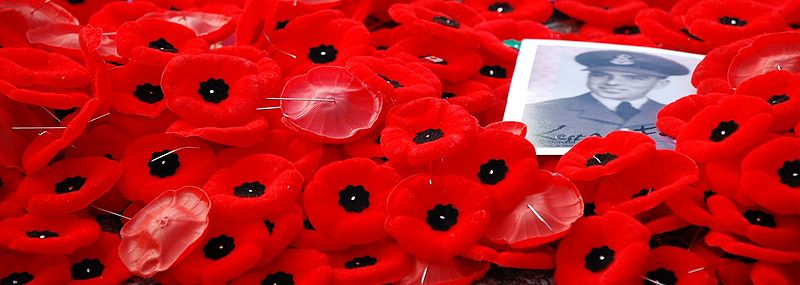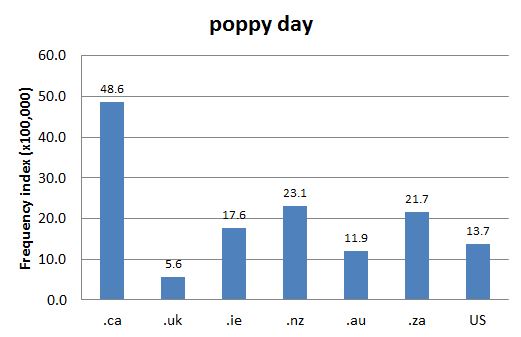DCHP-2
Poppy Day poppy day DCHP-2 (October 2016)
n. — originally Military, now widespread
also Armistice Day or Remembrance Day, held November 11th to mark the end of World War I.
Type: 4. Culturally Significant — Poppy Day appeared in the UK London Times in 1921, two weeks before it was mentioned by The Globe and Mail. Poppy Day has been used throughout the Commonwealth as an alternative to both Armistice Day and Remembrance Day. Remembrance Day, originally called Armistice Day, became the official name of this day for Canada in 1931 (see Veterans Affairs Canada reference).
The use of the poppy as a symbol for the blood sacrifice of the soldiers who died in the war was inspired by the famous poem "In Flanders Fields", written in 1915 by Canadian military physician John McCrae (1872-1918) (see the 1995 quotation). Before Remembrance Day, replica poppies are sold by the Royal Canadian Legion to raise money for veterans and other causes (see Image 1). The term is most frequent in Canada today (see Chart 1) and is thus both a preservation and a Canadianism in terms of frequency, yet its most relevant category is its cultural significance to official Canada and many Canadians.
Poppy Day is most prevalent in Canada according to internet domain searches (see Chart 1).
See also COD-2, s.v. "Poppy Day", which is marked "Brit. & Cdn".See also: Remembrance Day poppy
References:
- COD-2
- Veterans Affairs Canada "Facts on Remembrance Day" Accessed 6 Jun. 2013
Images:
Image 1: Pins commemorating Poppy Day. (Source: Wikimedia Commons. Photo: B. Aubry)
Chart 1: Internet Domain Search, 4 Oct. 2012

